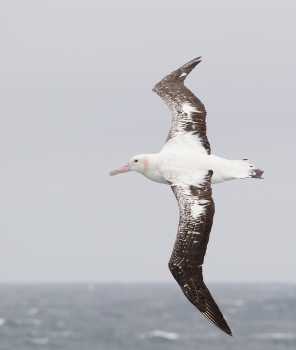Mostafa Hassanalian (Department of Mechanical and Aerospace Engineering, New Mexico State University, Las Cruces, New Mexico, USA) and colleagues have published in the Journal of Thermal Biology on whether dark upper wings in flying birds help them fly by reducing drag, utilizing albatrosses as an example.
The paper’s abstract follows:
“The thermal impact of the birds’ color on their flight performance are investigated. In most of the large migrating birds, the top of their wings is black. Considering this natural phenomenon in the migrating birds, such as albatross, a thermal analysis of the boundary layer of their wings is performed during the year depending on the solar insulation. It is shown that the temperature difference between the bright and dark colored top wing surface is around 10 °C. The dark color on the top of the wing increases the temperature of the boundary layer over the wing which consequently reduces the skin drag force over the wing. This reduction in the drag force can be considered as one of the effective factors for long endurance of these migrating birds. This research should lead to improved designs of the drones by applying the inspired colors which can help drones increase their endurance.”

Wandering Albatross at sea, photograph by John Chardine
Reference:
Hassanalian, M., Abdelmoula, H., Ben Ayed, S. & Abdelkef, A. 2017. Thermal impact of migrating birds’ wing color on their flight performance: Possibility of new generation of biologically inspired drones. Journal of Thermal Biology 66: 27-32.
John Cooper, ACAP Information Officer, 25 April 2017

 English
English  Français
Français  Español
Español